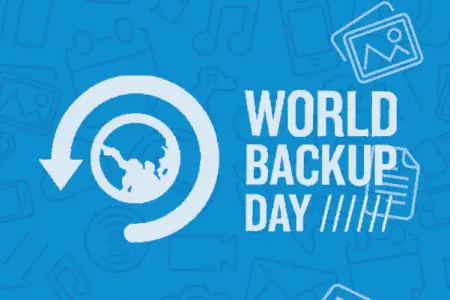
Where Is Disaster Recovery-as-a-Service Headed this Year?
As we forecast where the industry may lead in the year ahead, it helps to ask experts for insights about what to expect. With the proper guidance, we can better adjust our business plans. In this article, the tech experts at Zerto, a Hewlett Packard Enterprise company, weigh in.
Caroline Seymour, Christopher Rogers and Justin Paul had this to say about what 2023 may have in store for ransomware, disaster recovery, continuous data protection, and supply chains:
Caroline Seymour, VP of Product Marketing
In 2023, more than ever, the way to best combat ransomware will be through recovery. At this point, organizations are well aware of the threat posed by ransomware attacks and the frequency at which they occur. In two separate eye-opening studies, we’ve seen that one-third of all organizations worldwide have experienced a ransomware attack (IDC), and one-third of enterprises suffer weekly attacks. The fact that one in three organizations empirically feel the effects of ransomware will increasingly cause them to implement the best recovery strategies in the chance that they suffer an attack. Lastly, even if a company pays the ransomware, only 14% get all of their data back, proving that without a successful recovery strategy, data loss is a real risk.
Recovery will be the key factor in backup strategies for years to come. Organizations will rethink traditional backup infrastructure and invest in technology that provides the best possible RTO and RPOs, to not only recover completely from devastating cyber events but to do it quickly and minimize downtime.
2023 must be the moment that all organizations make ransomware a board-level challenge and initiative. No one has any more time to waste. With strong recovery built into the strategy, organizations can have a way out, even when disaster strikes.
Christopher Rogers, Technology Evangelist
On Continuous Data Protection (CDP):
I suspect ransomware will continue to be the biggest challenge for cybersecurity in 2023. Attacks are only getting harder to prevent, more sophisticated, and more profitable—there’s no need for threat actors to switch tactics anytime soon.
The rising frequency of ransomware attacks has also created a shift in public opinion when it comes to breaches. Organizations are now all too aware that cyber attacks have become an inevitability rather than a possibility—it’s no longer a matter of ‘if’ but ‘when’ disaster will strike. As a result, more and more businesses are investing significantly more in disaster recovery and backup solutions.
With recovery being a priority, CDP will be vital for companies in the new year. Backing up data without interruption takes the sting out of ransomware attacks—as data can be restored and operations brought back up and running in seconds or minutes rather than hours or days.
Lessons from 2022:
Looking back, the standout lessons from this year come mainly from Russian cyberattacks and the war in Ukraine, which has highlighted the importance of knowing where services and products are coming from. As a result, organizations have become more aware of the greater cybersecurity supply chain outside of themselves—questioning where their suppliers are getting their cybersecurity from. With concerns around data sovereignty, organizations are looking to keep things closer to home in 2023.
Justin Paul, Senior Product Manager
During 2022, Zerto saw growth from customers in all sectors with regard to Kubernetes data protection. It is becoming rare to speak with a customer who doesn’t have some plan for Kubernetes and cloud-native applications, which isn’t a surprise because customers are recognizing Kubernetes as a production-grade method for deploying production applications. As more and more customers move from the planning to execution stages of their cloud-native application journey, we will see more workloads that need data protection. Just like virtual machines before, containers are becoming the preferred choice of developers.
As more use cases are thrown at Kubernetes, the platform will have to evolve. New methods will be introduced to solve business challenges as production workloads are shifted from VMs to containers, and this will drive a lot of innovation over the next couple of years. Kubernetes is still maturing. This means there are some battle-tested best practices in the traditional VM world, especially around security and disaster recovery, that still need to be more widely adopted by DevOps teams.
It’s all about being nimble. As business needs and demands change, IT and application developers have to respond quicker than ever to meet the needs of their consumers. Leveraging Kubernetes, containers, and all things “as-code”—including data protection as code—helps to speed up the development and adoption of products and services. Faster to market equals faster revenue.
Kubernetes is excellent for application developers, but the infrastructure below it can be confusing for beginners on the infrastructure side of things. There are a lot of virtual machine infrastructure admins who will get their feet wet with Kubernetes in 2023. Because of that, I would love to see the Kubernetes ecosystem start to embrace the “non-developer” persona more; this will make it easier for infrastructure teams to adopt a “Kubernetes first” methodology.
As Kubernetes evolves and becomes the go-to platform for application development and deployment, attackers will focus more efforts on exploiting the data that is there. The number one thing a data-driven organization needs to do in 2023 is to make sure that data is protected and recoverable using proven, scalable, enterprise-class solutions that are purpose-built for Kubernetes.


